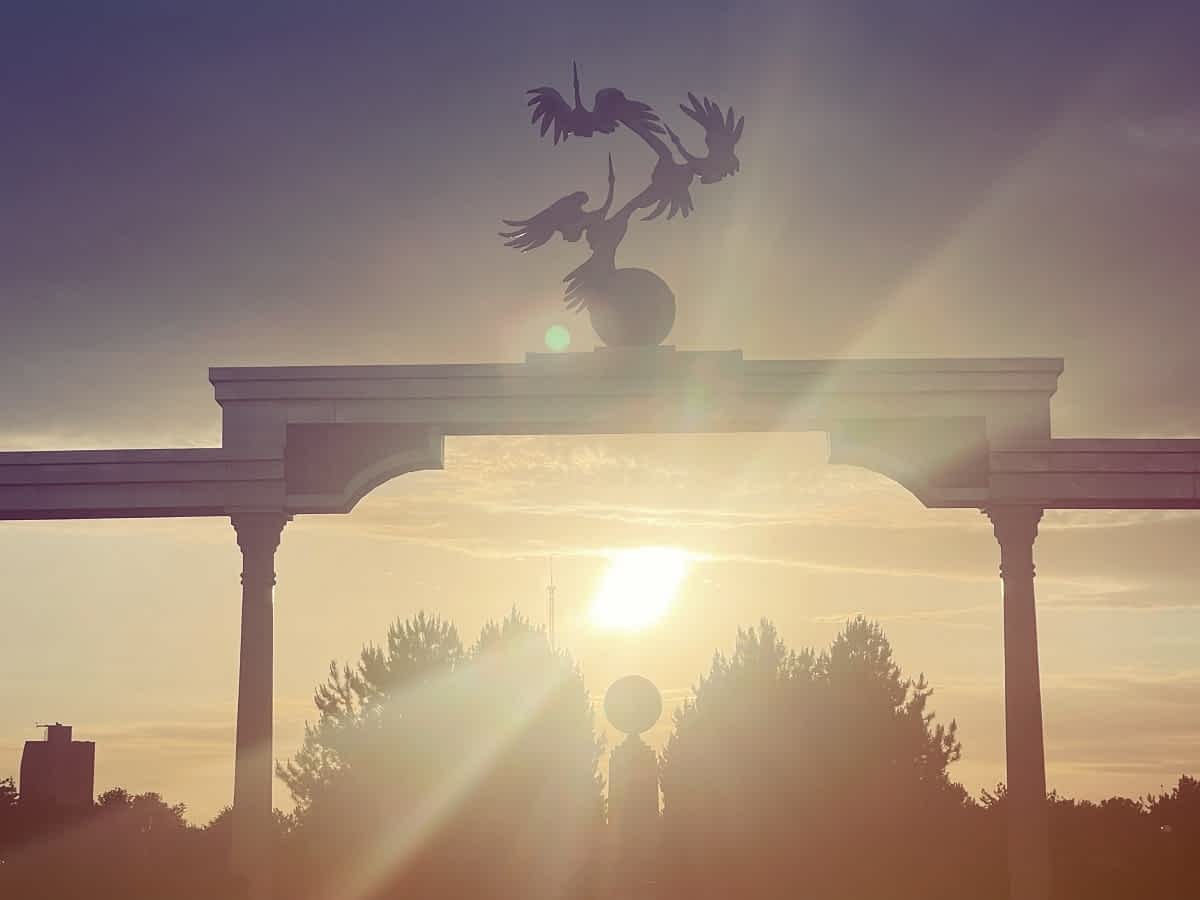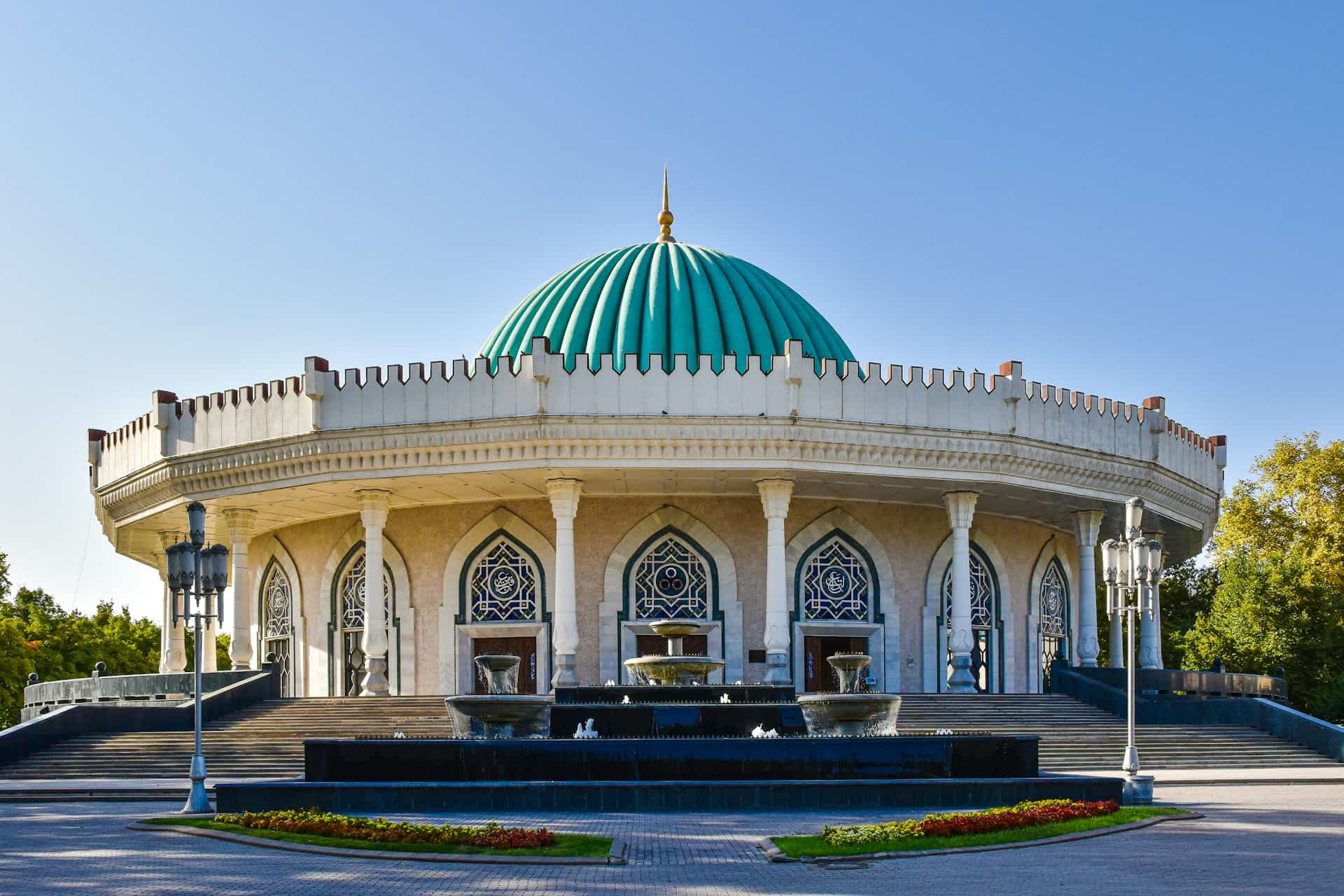A Brief History
Independence Square in Tashkent has been a central site for important decisions and events since 1866. Initially a deserted place, it transformed over time into a significant landmark. Before the Russian colonization of Turkestan, the area where Independence Square now stands was a deserted place.
Historian Boris Golender refutes the claim that the palace of Kokan Khan was located here, asserting instead that it housed the residence of the mayor of Tashkent.
From 1865 to 1992, the square underwent several name changes. It was known as Krasnaya (Red) Square from 1865 to 1917, Cathedral Square until 1917, and Lenin's Red Square from 1956 to 1992. Following the October Revolution and the establishment of Soviet power, the square was renamed Lenin Square.

The Soviet Era
The first significant structure in the square was the "White House," built in 1866 for the governor-general of Turkestan, Konstantin von Kaufman. This building, along with others in the area, was destroyed in the 1966 earthquake. In front of the White House, the Military Spaso-Preobrazhensky Cathedral was constructed between the early 1870s and 1888. This church served both religious and military functions but was demolished by the Soviet government in 1929.
During the Soviet era, the square became a focal point for military parades and public events. In 1930, the Soviet of People's Commissars of the Uzbek SSR was built on the site of the Governor General's house. The first statue of Lenin was erected in 1936, designed by sculptor Boris Korolyov. The statue was remodeled in 1975.
After the 1966 earthquake, Independence Square was completely reconstructed. Architects like S. Odilov and L. Adamov played significant roles in its redesign. The square was divided into high and low levels, with a high terrace, a long pool, and a waterfall. The Council of Ministers of the Uzbek SSR began construction on a new building in 1965, which was completed in 1967.
Post-Independence Transformation
Following Uzbekistan's independence in 1991, the square was renamed Independence Square in 1992. The statue of Lenin was replaced with the Monument of Independence and Virtue, featuring a bronze globe atop a pedestal, symbolizing the world’s recognition of Uzbekistan's sovereignty. The statue of "Mother Bakhtiyor" and the "Ezgulik" arch were also added in 2005.
The square has continued to serve as a site for major public celebrations and government events. In 1998, the Memorial Square was established nearby, featuring a monument with a portico and columns. The walls list the names of Uzbek soldiers who died in World War II, and an eternal flame burns in front of the "Mourning Mother" statue.
Post-independence, the square saw significant improvements under the directives of President Islam Karimov in 2004. New green areas and fountains were added, and the "White House" was adapted to house the Senate and later the Presidential Administration. The square now features various administrative buildings, including the Cabinet of Ministers, the State Committee for Physical Culture and Sports, and the Institute of Arts and Sciences.
Modern Significance
Independence Square continues to be a central location for Uzbekistan's national celebrations, public events, and government activities, symbolizing the country's historical and ongoing evolution.
Tashkent Tours
Interested in being shown around Tashkent by a friendly and knowledgeable local guide?

We offer some of the most affordable tours in Tashkent, led by professional and experienced guides.
Our tours include:
- City walking tours exploring Tashkent’s history, culture, and architecture
- Day trips from Tashkent to Samarkand and other cities of interest
- Scenic mountain tours to Chimgan, Charvak, and beyond
Whether you’re looking to explore Tashkent’s rich urban history or escape to the countryside, we provide some of the best value-for-money experiences in the city.